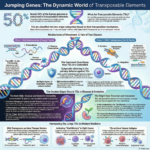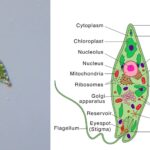O Level Biology 42 Views 1 Answers
Sourav PanLv 9November 2, 2024
State that large molecules are made from smaller molecules, limited to: starch, cellulose and glycogen from glucose; proteins from amino acids; lipids from fatty acids and glycerol; DNA from nucleotides
State that large molecules are made from smaller molecules, limited to: starch, cellulose and glycogen from glucose; proteins from amino acids; lipids from fatty acids and glycerol; DNA from nucleotides
Please login to save the post
Please login to submit an answer.
Sourav PanLv 9May 15, 2025
Large molecules, also known as macromolecules, are synthesized from smaller molecular units through various biochemical processes. Here are some key examples:
- Starch, Cellulose, and Glycogen: These polysaccharides are formed from glucose molecules.
- Starch serves as an energy storage molecule in plants.
- Cellulose provides structural support in plant cell walls.
- Glycogen acts as an energy storage molecule in animals.
- Proteins: Proteins are composed of long chains of amino acids. The sequence and arrangement of these amino acids determine the protein’s structure and function.
- Lipids: Lipids, such as fats and oils, are formed from fatty acids and glycerol. These molecules play essential roles in energy storage, cellular structure, and signaling.
- DNA: Deoxyribonucleic acid (DNA) is composed of nucleotides, which consist of a sugar, a phosphate group, and a nitrogenous base. DNA carries genetic information vital for the growth, development, and reproduction of living organisms.
0
0 likes
- Share on Facebook
- Share on Twitter
- Share on LinkedIn
0 found this helpful out of 0 votes
Helpful: 0%
Helpful: 0%
Was this page helpful?




